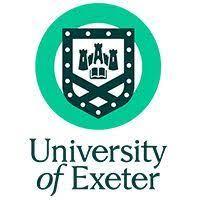
Constructive use of varied assessment methods
When it comes to assessing students, the fundamental question lies not only in how to test them but also how often, in what capacity, and how the questions should be designed. Below, we will address the main uses of assessments and how they can be used to maximise student potential.
- Designing assessments to support deeper learning
- Assessment design that supports authentic learning (and discourages cheating)
- Assessing your assessment: creating inclusive and meaningful assignments
Students benefit from having mixed methods of assessment throughout a course. This way, educators can enable learners to demonstrate their understanding of the course. These can take various forms, including:
- traditional invigilated closed-book exams
- online assessments: these can be done at home or invigilated in a computer lab
- asking students to orally reflect on their understanding of a question or solution
- online portfolios to show students have researched a problem or topic in depth – this allows students to navigate through the ideas behind a topic
- peer assessments: this can be as an exercise in which students assess a peer’s work, or it can be a group assessment as part of a team project
- asking students to present their solution in class to their peers – this activity helps them recall that methodology in later stages of a course
It is often useful to test different learning outcomes using different modes of assessment. For example, in mathematics, we can use computer-aided assessments for questions that require a short numerical answer, or those easily formatted as multiple-choice questions. We might use a closed-book invigilated exam to test proof-style questions or the implementation of an algorithm whereby each step is required to examine their understanding of it. While oral reflection techniques are ideal to test a student on their understanding of a programming code. There are learning curves involved when implementing any mode of assessment, particularly if using the mode for the first or second time. Therefore, the management of staff is important and this relates to providing them with the right amount of training and time needed for educators to adopt a new method of assessment in their courses.
Online assessments involve using technological devices to test students on topics they learned. As the digital revolution advances, online assessments are becoming more popular in UK institutions and worldwide to enhance the student learning experience while satisfying the need for new technologies.
Regular assessments help students stay on track in their course. Regardless of their subject, students often have difficulties keeping on track with their modules. However, this difficulty is more evident in subjects where learning each new topic is dependent on an understanding of previous topics, such as mathematics. For example, it is well known that having a good grasp of elementary calculus will aid in learning multivariate calculus.
An effective way to keep students on track with the content is to have regular, weekly, assessments based on the content learned in that week. Whether these regular assessments should be formative, whereby the marks obtained will not be recorded and will not contribute to the final mark of the module, or summative, where the marks do count, is debatable. It has been observed that student engagement with these assessments tends to be higher when the tests are summative.
Diagnostic tests identify which topics, or question styles, students find difficult and which they perform well in. This is useful for both educators and students, because the performance allows us to identify any gaps in the content delivered and whether a topic needs to be revisited. This also allows us to personalise support and provide the specific help needed.
Regular assessments also need to test mastery because part of staying on track with the content means being familiar with the basic material as well as recalling how to state and apply knowledge from the prerequisite modules. Therefore, with regular formative assessments, the pass mark should be relatively high, say around 70 per cent.
To run constructive assessments of any type, the following must be taken into account.
- The questions must be on topics that are part of the curriculum. As with classical written exams, students should not be misled by having questions on material they are not expected to know.
- Solutions need to be provided and this feedback needs to be thorough and clear in order for students to identify their strengths and areas of improvement in that topic.
- Inform students beforehand which intended learning outcomes are being tested.
- Provide a clear indication on how the question is being marked and how many marks will be rewarded, or deducted, for each subpart.
- A range of question formats should be used. Students come from different educational backgrounds so a mix of question styles ensures that no students are being disadvantaged.
- The tests should be designed with inclusivity in mind. This includes allowing extra time for students who have individual learning plans, but the design of the questions is also important. Consider factors such as using non-discriminatory language, using colours that are suitable for those who are colour-blind and using labels and figures to help those with dyslexia.
When using online assessments, all the above points need to be considered as well as the following:
- Students need to be well trained to use the relevant online tools. Many students fear non-classical assessment methods due to concerns they will not know how to use the digital systems. Providing a sample test is also a good way to introduce the tool and how to use it. Examples and samples always help.
- Since there may be various ways of inputting the syntax of the correct answer, students should be provided with the expected style for typing their answer.
- Collecting student responses is necessary. The feedback plays a major role on how we shape our resources to create improved assessments.
- Running the test through the university’s virtual learning environment (VLE) is helpful as students will already be familiar with how to use it.
- Having options to change the visual design such as the background colour, font size and font style makes it easier for students to personalise the test for ease of use.
Almost all topics in mathematics build upon a sound understanding in a former topic. Therefore, as educators, we should look for effective techniques to help students stay on track with the course material as the term elapses. A useful way to do this is to provide ongoing assessments while using mixed methods. Assessment writers and markers should take into account the diversity of students and adapt assessment methods to their needs.
Layal Hakim is senior lecturer in mathematics at the University of Exeter.
If you found this interesting and want advice and insight from academics and university staff delivered directly to your inbox each week, sign up for the THE Campus newsletter.




